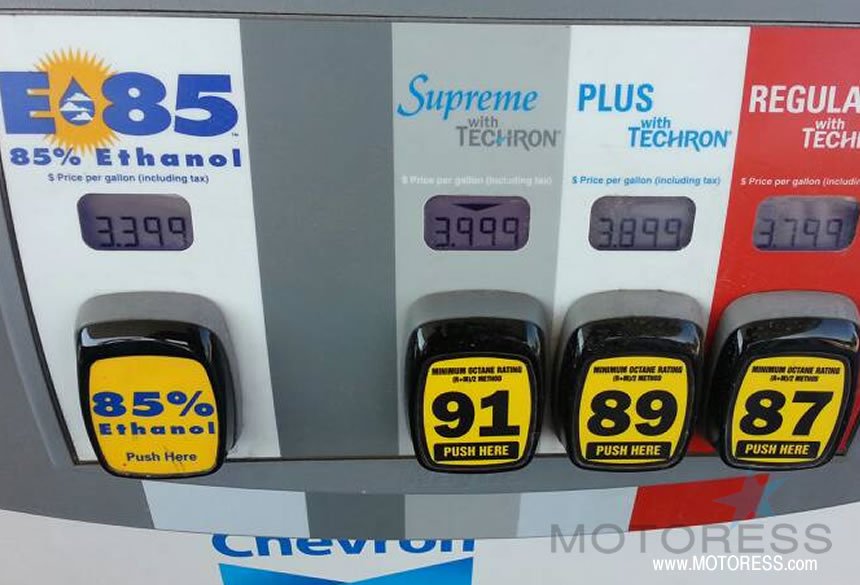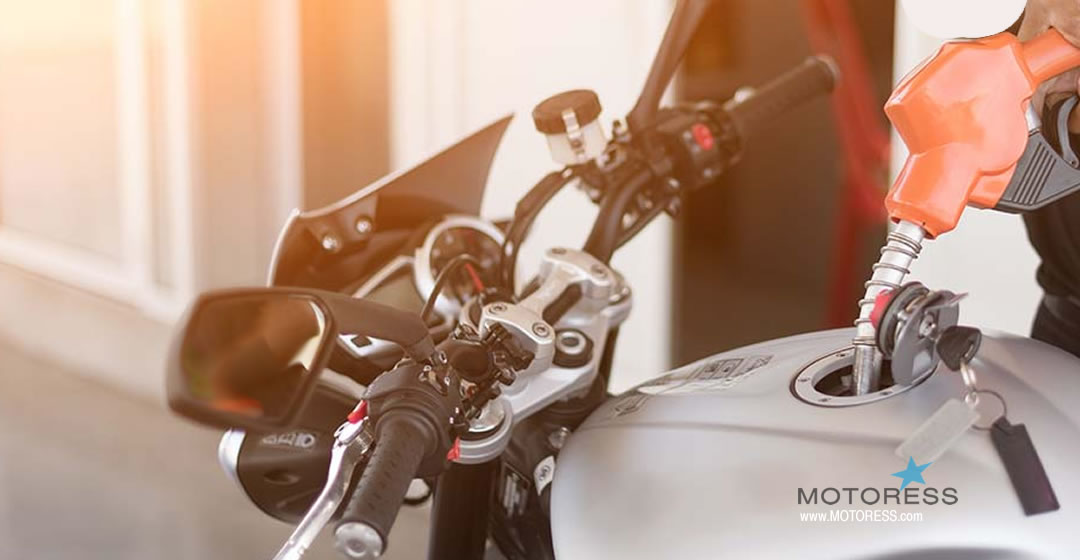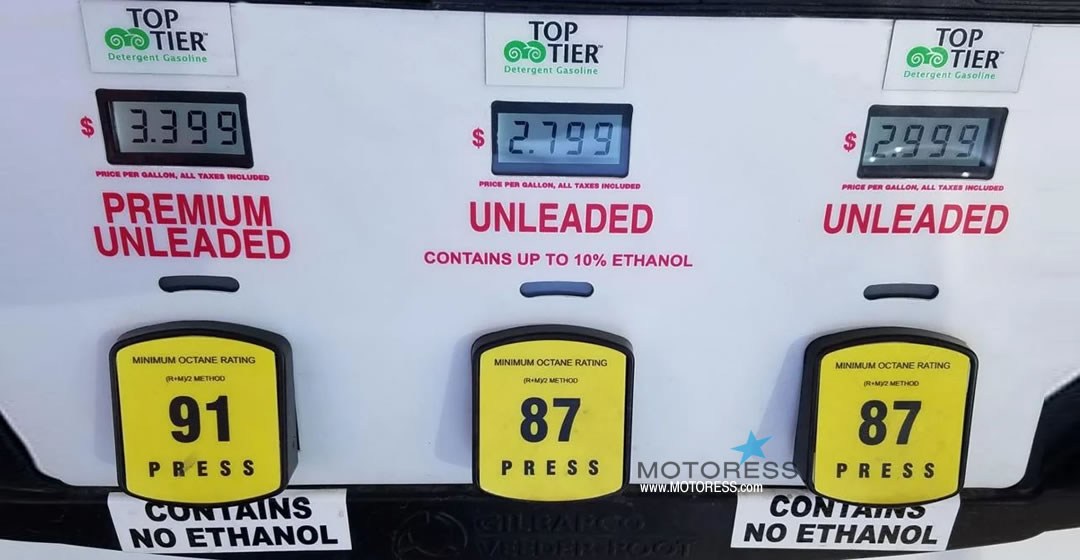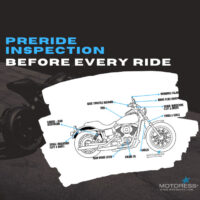Last Update: 3 October 2023
Post Last updated: August 2023

Hitting the open road on a motorcycle is an experience like no other, but behind the handlebars lies a critical decision that can significantly impact your ride’s performance and longevity —choosing the right fuel. Just as different motorcycles cater to various riding styles, the fuel you select plays a vital role in optimising your bike’s engine performance, fuel efficiency, and overall reliability. In this guide, we’ll delve into the intricacies of selecting the ideal fuel for your motorcycle, helping you make informed choices that will enhance both your riding experience and the lifespan of your beloved two-wheeled companion. Whether you’re a seasoned rider or a newcomer to the world of motorcycling, understanding your motorcycle’s fuel needs is a fundamental step toward unlocking its full potential on the road. So, let’s dive into the fascinating world of motorcycle fuels and ensure that every twist of the throttle brings you closer to the ultimate riding satisfaction.
About Your Motorcycle’s Fuel System
The fuel system is a vital internal system that ensures your motorcycle gets its essential power – fuel delivered to the right place in the right amount for the best performance. Like other parts of the bike, the fuel system requires looking after, but it doesn’t have to be difficult but more of a preventive.
Getting the Right Type Of Fuel For Your Motorcycle
Fuel is far too often overlooked as a form of preventive maintenance on a motorcycle. And any time you’re talking about fuel and fuel systems, your fuel filter needs to be included. If you have a fuel filter, check it regularly to make sure it’s clean and not clogged up. Don’t forget to check the bike’s fuel lines for weather damage and cracking – and replace if any wear or damage found.
The Fuel Dilemma: Gasoline vs. Ethanol
Gasoline: The Classic Choice
When it comes to selecting fuel for your motorcycle, gasoline is the tried-and-true option that has powered bikes for generations. Most standard motorcycles, whether they’re cruisers, sportbikes, or touring models, are designed to run on gasoline. It offers a stable and consistent source of energy for your engine, ensuring reliable ignition and smooth operation.
One key consideration when using gasoline is the octane rating. Octane ratings indicate the fuel’s resistance to “knocking” or “pinging” during combustion, which can occur when the air-fuel mixture ignites prematurely. Motorcycles typically require gasoline with octane ratings ranging from 87 to 91, depending on the engine’s compression ratio and design. Using the recommended octane level for your motorcycle is essential to prevent engine damage and maintain peak performance.
Ethanol: A Greener Option?
In recent years, ethanol-blended fuels, such as E10 (10% ethanol) and E85 (up to 85% ethanol), have gained popularity as a more environmentally friendly choice. Ethanol is derived from renewable sources like corn and sugarcane, making it a potentially sustainable option. However, its compatibility with motorcycles varies.
While some modern motorcycles are equipped to handle ethanol-blended fuels, others may experience issues when using them. Ethanol can absorb moisture, which might lead to corrosion and fuel system problems if your motorcycle isn’t designed to handle it. It’s crucial to consult your motorcycle’s owner’s manual or contact the manufacturer to determine whether ethanol-blended fuels are suitable for your bike.
Ethanol can absorb moisture, which might lead to corrosion and fuel system problems if your motorcycle isn’t designed to handle it.
Some US states like Minnesota are doing state-wide mandates to go up to 20% ethanol in the next five years, if not sooner. All of these mandates are aimed at improving air quality and reducing air pollution from fuel emissions, which ethanol blends achieve through the lowering of harmful emissions.

Renewable Contents In Ontario’s Gasoline
“Ontario: the Cleaner Transportation Fuels regulation requires that fuel suppliers blend 10% of renewable content in gasoline from 2020 to 2024. The renewable content requirement increases to 11% in 2025, 13% in 2028, and 15% in 2030 and onwards. The renewable content must emit fewer greenhouse gas emissions than fossil gasoline on a lifecycle basis by 45% before 2030 and 50% from 2030 onward.”
Knowing Your Motorcycle’s Requirements

Choosing the right fuel for your motorcycle extends beyond the octane rating or ethanol content; it also involves understanding your bike’s specific requirements. Each motorcycle model is unique, with variations in engine type, compression ratio, and fuel system design. Here are a few essential steps to ensure you’re meeting your motorcycle’s fuel needs:
1. Read the Owner’s Manual: The owner’s manual is your motorcycle’s bible. It provides valuable information about the manufacturer’s recommended fuel type, octane rating, and any specific instructions for your bike.
2. Consider Your Bike’s Age: Older motorcycles may have different fuel requirements than their modern counterparts. Vintage bikes, for instance, might be better suited to leaded fuels, while newer models are designed for unleaded gasoline.
3. Pay Attention to Modifications: If you’ve made performance modifications to your motorcycle, such as installing a high-performance exhaust or altering the engine’s compression ratio, these changes could impact your fuel requirements. Consult with a mechanic or expert in motorcycle tuning if you’re unsure.
4. Observe Performance and Efficiency: Pay close attention to how your motorcycle performs and its fuel efficiency. Any sudden changes in engine behaviour, such as knocking, poor mileage, or sluggishness, could be signs that your current fuel choice isn’t suitable.
In the next sections of this guide, we’ll delve deeper into the nuances of motorcycle fuel selection, including tips for fuel storage, troubleshooting common fuel-related issues, and exploring alternative fuel options for those seeking more sustainable choices. By the end of this journey, you’ll be equipped with the knowledge and confidence to choose the right fuel for your motorcycle, ensuring a smoother ride and a longer-lasting partnership between you and your two-wheeled companion.
Troubleshooting Fuel-Related Issues
Despite your best efforts, you may encounter fuel-related issues with your motorcycle. Here are some common problems and their potential solutions:
1. Poor Mileage: If your motorcycle suddenly becomes less fuel-efficient, it could be due to various factors, including incorrect tire pressure, dirty air filters, or a need for a tune-up. Regular maintenance and keeping your motorcycle in peak condition can help improve mileage.
2. Engine Knocking: A knocking or pinging sound from your engine can indicate that you’re using fuel with an incorrect octane rating. Switch to the recommended octane level for your bike to eliminate this issue.
3. Hard Starting or Stalling: Difficulty starting or frequent stalling can be linked to contaminated fuel, clogged fuel filters, or carburettor issues. It’s essential to diagnose the root cause and address it promptly to prevent further damage.
Exploring Alternative Fuel Options
As environmental concerns grow, some motorcyclists are looking for alternative fuel options that are more eco-friendly. While electric motorcycles are gaining traction, traditional internal combustion engines can also use alternative fuels like biodiesel or compressed natural gas (CNG). However, it’s important to note that these alternative fuels may require engine modifications and are not universally available.
Before considering alternative fuels, research their availability in your area and whether your motorcycle is compatible. Additionally, consider the environmental benefits and drawbacks of each option.
Fuel Your Future
Selecting the right fuel for your motorcycle is a fundamental aspect of responsible ownership. It not only ensures optimal performance but also contributes to the longevity of your bike. By following your manufacturer’s recommendations, practising proper fuel storage and handling, and staying vigilant for any fuel-related issues, you can enjoy many more miles of exhilarating rides with your trusty two-wheeled companion. As the motorcycling community continues to evolve, embracing alternative fuels and eco-conscious practices can also help pave the way for a sustainable and exciting future on the open road.
More Ethanol FYI’s
- The percentage of ethanol blend is indicated by the E number. For example E10 means the gas mixture contains 90% gas and 10% ethanol. In automobiles, ethanol fuel won’t do much harm to your car’s engine.
- Loss of Mileage. Gas that’s blended with ethanol is less efficient. You’ll get between three and five percent less MPG if you’re using gas with 10% ethanol. Use of ethanol blends results from the ethanol molecule containing less energy value than gasoline. The energy value in petroleum fuels is a function of the number of carbon bonds in the molecule. Gasoline molecules are much longer with more carbon bonds than the small ethanol molecule, so you have less energy potential in that blended fuel.
- Water Attraction. Pure ethanol has a strong ability to absorb water from the atmosphere around it, leading to poor engine performance. E10 gas absorbs up to 50 times more water than standard gasoline. Ethanol has such a strong attraction to water that chemical producers cannot even sell 100% pure ethanol – it is always 99.8% or less, because there will always be at least a tiny bit of water. It then contributes to a whole host of fuel problems and issues for all types of engines (big and small) that use ethanol. It is best that you replace gas in your fuel tank every 2-3 weeks to avoid alcohol and water related engine issues.
- Phase Separation. This term applies to when the ethanol ‘phase’ separates from the gasoline ‘phase’ and results in two layers of two different compounds, instead of a consistent mixture of gasoline and ethanol. At this point the ethanol will sink below the gasoline phase and mix with any more accumulated water, making an ethanol-water phase mixture that sits on the bottom of the tank where the fuel pickup line locates. Ethanol fuel that has phase separated cannot be put back together because the ethanol and water have combined into a seamless layer.
- Ethanol found in most on-road gasoline is highly corrosive and will actually dissolve the aluminium in your carburettor over time. A good fuel additive mixed in with the gasoline should coat and protect the carburettor and fuel system components, protecting them from this process. This is very important when your bike is in storage for a long period of time.
- Ethanol is also an excellent solvent. It will dissolve plastic, rubber, fibreglass and much more, potentially causing serious problems to engines.
- Breeding Ground For Microbes. Microbes like bacteria and fungi all need an accumulated water phase in order to grow and thrive in a fuel storage tank. The bacteria live in between the water and fuel, feeding off of both materials, growing and multiplying and giving off the harmful by-products of their life cycle. If an infestation takes hold, problems with corrosion, filter plugging and reduction in fuel quality can follow.

More Tips
- Additives make a huge difference. You’ll get the same exact gasoline no matter where you buy it from. It doesn’t matter if you go to Shell, Exxon, or Walmart, it all gets mixed together in the pipelines before hitting the storage depots. However, additives make a huge difference. That’s why it is important to stick to the strong brands.
- Use “Top Tier Gas”. Top Tier Detergent Gasoline was first introduced in 2004 when a group of auto makers recognised the need for a higher detergency gasoline standard than that required by regulation. To be officially listed as a Top Tier Gas supplier, there must be roughly 2.5 times more detergent than the EPA minimum standard. Here are the list of recognised fuel stations under the Top Tier Gas “umbrella”.
- Gasoline changes with the weather. Gas boils very easily which is bad for the environment and not great for your fuel tank. The formula you’re pumping is altered to fit the conditions. For example, the fuel you purchase in Quebec in say springtime has a much lower boiling point that the fuel you purchase in Florida in August. These are good things to take into consideration when your ride involves such geo changes or if shipping your motorcycle to another country.
- While E10 fuels are approved for small engine equipment usage, it is not recommended, especially in handheld products. Gas with ethanol separates while being stored in your gas tank. The 2 stroke oil remains bonded to the gasoline but not to ethanol. Thus, the ethanol and water part of the mixture contains no oil for engine lubrication. This leads to poor lubrication, performance issues and costly repairs over time.
Fuel Storage and Handling
Choosing the right fuel is just the beginning; how you store and handle it also plays a crucial role in maintaining your motorcycle’s performance and reliability.
1. Fuel Freshness: Fuel can deteriorate over time, especially if it’s stored for extended periods. Things that cause gasoline fuels to lose their quality are: exposure to air and light and accumulation of water from the environment. Consider using a fuel stabiliser if you plan to store your motorcycle for an extended period, such as during the winter months. Stabilisers help prevent the formation of gum and varnish in the fuel system. A good fuel additive treatment can double or triple the life of gasoline.
2. Proper Containers: When storing spare fuel or transporting it for longer rides, ensure you use appropriate containers designed for gasoline. These containers should be clean, sealed tightly, and labelled to prevent any mix-ups with other liquids.
3. Avoid Contamination: Keep your fuel storage area clean and free from contaminants. Even a small amount of dirt or water in your fuel can lead to engine problems.
Fuelling up is important to the function of your motorcycle. Where you can and unless strongly otherwise advised from your manufacturer, purchase ethanol free gas. Always keep your fuel fresh and never buy and store gas for more than a 30 day supply.




